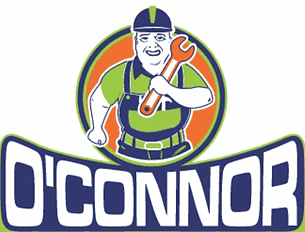FAQ's
REQUEST SERVICE QUOTE
faqs banner
Q: Why should I choose an insulated door if my garage is not insulated?
A: A garage door opening is very large. Insulated doors will help to reduce the transfer of heat or cold air into your garage. This is important for a number of reasons:
- If your garage is attached to your home, air in the garage can travel through the doorway to your living area.
- If you use your garage as a workshop, your comfort will be a top priority.
- If your garage is below another room in your home, air can travel through the ceiling of the garage into the floor of the room above. An insulated door will keep temperatures in the garage fairly stable to reduce the temperature fluctuation in the room above.
- An insulated door is generally quieter and has a more attractive interior than a non-insulated door.
Q: What are the benefits of a steel door versus a wood door?
A: Steel doors may require less maintenance than a wood door. Amarr steel doors are pre-painted with a factory-applied baked-on coating. Amarr recommends an annual cleaning of the exterior of the door with a common household detergent and warm water at least one time per year. Amarr wood doors are unfinished and need to be primed and painted or stained on all six sides of the door upon delivery. Amarr recommends visual inspection of the paint or stain finish on wood doors one time per year to confirm if another finish application is necessary.
Q: What type of spring is better...extension or torsion?
A: The two types of springs used on garage doors today are extension and torsion springs. Extension springs are attached on either side of the door and stretch along the horizontal track when the door is closed. Torsion springs are typically located just above the top section of the door and are mounted to the header. They are wound springs and do not expand or contract when the door is moved. Some homeowners prefer torsion springs because these springs offer more safety and provide better balance to the door for smoother operation.
Q: The door won't close when I push the button - what's wrong?
A: Your safety sensors may be misaligned. Check the safety sensors or call for service.
Q: The garage door won't open.
A: You may have a broken spring or issues with the electric operator
Q: The electric operator runs but the chain does not move - is it broken?
A:Your drive gear may be stripped or the sprocket may be broken.
Q: Why do I have to hold down the button for the garage door to close?
A: Your safety sensors may be misaligned. Check to see if your sensors lights are on.
Q: How do I disconnect/reconnect electric operator?
A: To disconnect electric operator, pull the red manual release handle down and then lift the garage door up. To reconnect the electric operator, simply push the wall button in your garage to re engage.
Q: My garage door is making funny noises - is it about to break?
A: Try lubricating your rollers and hinges. You can also call for service.
Q: How do I program my remote/keyless/car?
A: Unfortunately, every unit is different. Please consult your owner's manual. If you don't have it, look for the brand on the opener and check their website.
Q: Chain on electric operator moves but the door won't open - what's causing that?
A: Check to see if the trolley is engaged. If you need help, please call us!
Q: The door won't close evenly.
A: You may have broken lift cables. We recommend calling us out to troubleshoot.
Q: Remotes don't work, but wall button does - are the batteries dead?
A: It could be batteries in the remote, or the lock button on the wall may have been toggled.
Q: Electric operator hums or makes a clicking noise
A: Call us for service - it is most likely on its last legs and could let go at any moment rendering your garage door broken.

